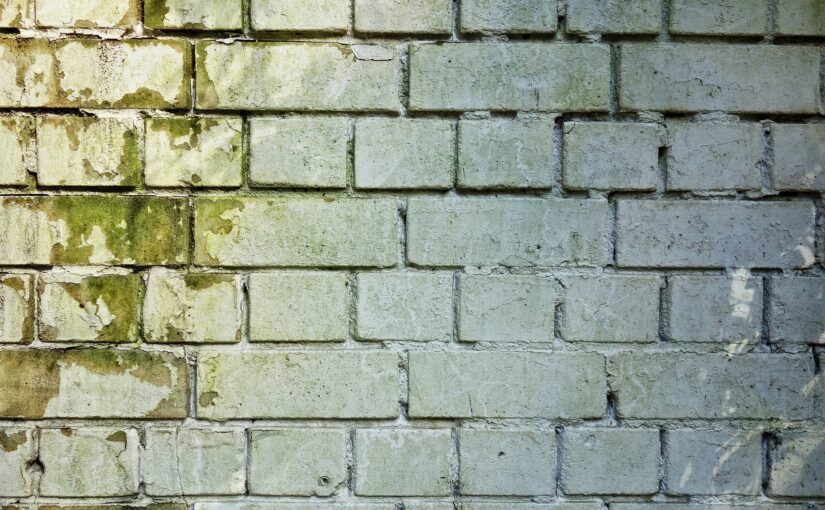Raising damp or humidity in an old house is quite common. That’s why, sooner or later, you will probably have to deal with it. Especially if you are looking for cheap houses for sale or fixer-uppers it is good to know as many of those properties come with that problem.
Why It Became More Comon?
Until the 20th century, most stone buildings in Europe and North America were constructed with materials that allowed air flow to circulate more freely. They were often made with soft paints like water-based paint that are sensitive to moisture.
The newer application of impermeable materials, such as linoleum, cement and gypsum-based floorboards, have been thought by some to cause more damp problems in older houses.
What is Damp, What Causes it and When it’s a Problem
Dampness is the presence of water in an environment. It can be caused by condensation, leaks, or a high level of humidity. Dampness can lead to mold growth and in some instances even structural damage. One thing is sure, it is bad as it can be a serious health hazard.
Easy Fixes for Raising Damp Problems
Raising damp and moisture can cause problems to your house and your health. It can lead to a variety of health issues such as asthma, allergies, and respiratory problems.
The first step is to find out the source of the moisture. The best way to do this is by using a moisture meter. If it’s coming from your roof or windows, you should fix them. If it’s coming from the walls, you should fix them too by installing a damp-proof course.
Other ways of fixing damp problems are: installing an extractor fan in your bathroom, drying clothes outside when possible, insulating pipes and radiators so that they don’t leak water into walls or ceilings, and using dehumidifiers in rooms where there is excessive humidity.
How Do You Treat Raising Damp?
Dampness can be a huge problem for people who live in an old house or building. It can cause a lot of problems, such as black mold and wood rot.
There are many ways you can treat dampness. You should first find out the cause of the dampness and then decide which way is best to treat it. For example, if the dampness is caused by condensation on windows and walls, you should try to fix the leaky window or seal off any cracks in the wall with silicone sealant.
If you need to get rid of dampness quickly, try using an industrial fan heater to dry out your home or building. They are also great for drying wet carpets after flooding occurs in your home.
Prevent And Get Rid Of Damp For Good
Damp is the most common type of building defect in the UK. It can be caused by a variety of factors, including rising damp and condensation.
It can be difficult to get rid of damp, as it will often return after treatment. If you want to prevent damp from returning, you should make sure that your property is well ventilated and that there are no leaks or cracks in the walls or foundations. It’s also important to check for any signs of water-related problems like leaky pipes, defective gutters, and roofing problems.
Why You Need to Take Action?
Dampness is a problem that develops over time. It can be caused by a number of things, including moisture in the home or water leaking in through the foundation.
It’s important to take action before your home becomes too damaged or someone gets seriously ill. The best way to avoid this problem is to regularly check for dampness and take action as soon as you notice it.
Home Remedies for Raising Damp
There are many ways to get rid of the problem of raising damp and mold in your home. One way is to use a dehumidifier. This is an appliance that removes excess moisture from the air. It will help you control humidity levels in your home which can reduce the growth of mold and mildew. It’s pritty simple. All you have to do is to plug it into a wall outlet to remove excess moisture in your home. It also helps control humidity levels, which is essential for controlling mold and mildew growth.
Another way to get rid of the issue is by using bleach. Remember, bleach works both as a disinfectant and an antimicrobial agent that can kill mold and mildew. You can mix 1/4 cup of bleach with one gallon of water and use it to clean surfaces or you can pour it on the floor in small quantities. multiple times. One thing you must remember before using bleach is to make sure that there are no pets or children around the area you are cleaning.
Wet Basement
There are many reasons that a basement can leak. It can be due to water seeping in from the outside or a pipe that has broken. There are also times when the foundation is not properly sealed and water can come in through cracks and crevices in the foundation.
The best way to fix this problem is to install a waterproofing system on the floor of your basement. This will help protect your home from any leaks, and it will also help you avoid costly repairs.
Conclusion
The best way to deal with the problem of rising damp is to get it fixed as soon as possible. It’s not just an aesthetic problem, it can lead to structural and health problems in the future.
Do you have a property for sale? Here you can list real estate for free.
